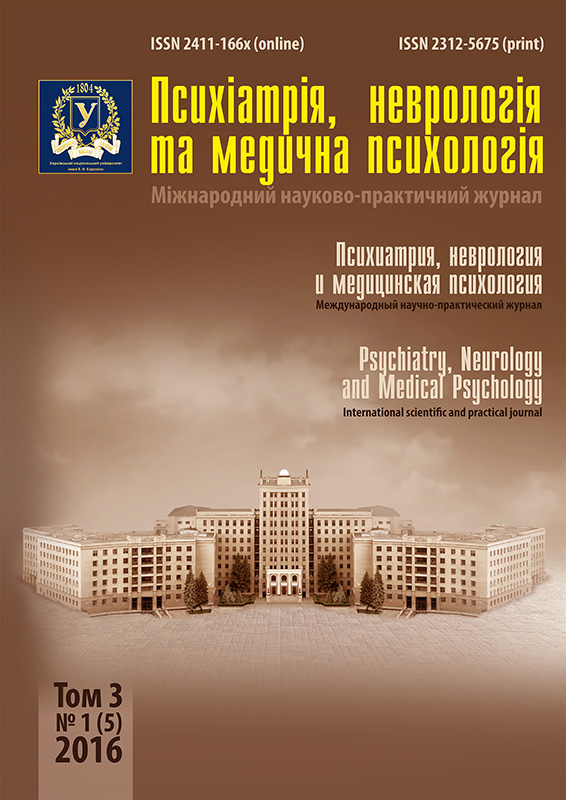Application of Animal-Assisted Therapy in Children with Autism Spectrum Disorders
Abstract
The diagnosis of autism spectrum disorder (ASD) has steadily increased in recent years. Families of children with autism often pursue different interventions in the hope of ameliorating particular aspects associated with ASD. Animal assisted intervention (AAI), which has been defined as the use of an animal to provide therapeutic benefit based on a positive relationship between the client and the animal, is a therapeutic measure for children with autism spectrum disorder (ASD). Used on the basis of the Centre’s psychosocial rehabilitation of children and adolescents, Feldman Ecopark animal-assisted therapy for children with autism spectrum disorder provides a number of perspectives to the child’s benefit: the psychological aspect; the social aspect and the technical aspect. The article describes new combinations of disability treatment called Equine Assisted Therapy and Canistherapy in Ukraine. The results of this study indicate that combined EAT and Canistherapy may have a wide range of therapeutic benefits for children with ASD; such program is a unique form of therapy as it can influence so many areas of physical and psychological functioning.
Downloads
References
National Information Mental Health. Autism spectrum disorder (statistics). Retrieved January, 2001, no. 18.
American Psychiatric Association. Diagnostic and statistical manual of mental disorders, 5th ed., Arlington, VA, American Psychiatric Publishing, 2013.
Centers for Disease Control and Prevention. Autism spectrum disorder: Facts about ASD, 2014.
Davis T. N., O’Reilly M., Kang S., Lang R., Rispoli M., Sigafoos J., Mulloy A. Chelation treatment for autism spectrum disorders: A systematic review. Research in Autism Spectrum Disorders, 2013, no. 7, pp. 49-55.
Green V. A., Pituch K. A., Itchon J., Choi A., O’Reilly M., Sigafoos J. Internet survey of treatments used by parents of children with autism. Research in Developmental Disabilities, 2006, no. 27, pp. 70-84.
Heflin L. J., Simpson R. L. Interventions for children and youth with autism: Prudent choices in a world of exaggerated claims and empty promises. Part I: Intervention and treatment option review. Focus on Autism and Other Developmental Disabilities, 1998, no. 13, pp. 194-211.
Mulloy A., Lang R., O’Reilly M., Sigafoos J., Lancioni G., Rispoli M. Gluten-free and casein-free diets in the treatment of autism spectrum disorders: A systematic review. Research in Autism Spectrum Disorders, 2010, no. 4, 328-339.
Sams M. J., Fortney E. V., Willenbring S. Occupational therapy incorporating animals for children with autism: A pilot investigation. The American Journal of Occupational Therapy, 2006, no. 60, 268-274.
Silva K., Correia R., Lima M., Magalhaes A., De Sousa L. Can dogs prime autistic children for therapy? Evidence from a single case study. The Journal of Alternative and Complementary Medicine, 2011, no. 17, pp. 655-659.
Solomon O. What a dog can do: Children with autism and therapy dogs in social interaction. Ethos, 2010, no. 38, pp. 143-166.
Palley L. S., O’Rourke P. P., Niemi S. M. Main-streaming animal-assisted therapy. ILAR Journal, 2010, no. 51, pp. 199-207.
Esposito L., McCardle P., Maholmes P., McCune S., Griffin J. A. Introduction. Animals in our lives: Human-animal interaction in family, community, and therapeutic settings [eds. P. McCardle, S. McCune, J. A. Griffin, L. Es-posito, & L. S. Freund]. Baltimore, MD, Brookes Publishing Co., 2011, pp. 1-5.
Kruger K. A., Serpell A. Animal-assisted interventions in mental health. Handbook on animalas sisted therapy: Theoretical foundations and guidelines for practice [ed. A. H. Fine] 3rd ed., San Diego, CA: Academic Press, 2010, pp. 33-48.
Breitenbach E., Stumpf E., Fersen L. V., Ebert H. Dolphin-assisted therapy: Changes in interaction and communication between children with severe disabilities and their caregivers. Anthrozoo ̈s, 2009, no. 22, pp. 277-289.
Bass M. M., Duchowny C. A., Llabre M. M. The effect of therapeutic horseback riding on social functioning in children with autism. Journal of Autism and Developmental Disorders, 2009, no. 39, pp. 1261-1267.
Burrows K. E., Adams C. L., Millman S. T. Factors affecting behavior and welfare of service dogs for children with autism spectrum disorder. Journal of Applied Animal Welfare Science, 2008, no. 11, pp. 42-62.
Dingman A. Hoof prints: Equine therapy for au-tistic children. Encounter, 2008, no. 21(4), pp. 11-13.
Memishevikj H., Hodzhikj S. The effects of equine-assisted therapy in improving the psychosocial functioning of children with autism. Journal of Special Education and Rehabilitation, 2010, no. 11, pp. 57-67.
Pawlik-Popielarska B. M. The impact of kyno-therapy in handicapped children. Acta Neuropsychologica, 2010, no. 8, pp. 26-37.
Maurer M., Delfour F., Wolff M., Adrien J. Dogs, cats and horses: Their different representations in the minds of typical and clinical populations of children. Anthrozoo ̈s, 2010, no. 2, 383-395.
Bush C. T. Excerpts From the Report of the Surgeon General’s Conference on Children’s Mental Health: A National Action Agenda. Journal of Child and Adoles-cent Psychiatric Nursing, 2001, no. 14(2), pp. 94-95.
Martin F., Farnum J. Animal-assisted therapy for children with pervasive developmental disorders. Western Journal of Nursing Research, 2002, no. 24, pp. 657-670.
Copyright (c) 2016 B. V. Mykhaylov, M. E. Vodka, I. D. Vashkite, T. A. Aliieva

This work is licensed under a Creative Commons Attribution 4.0 International License.




